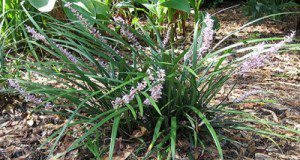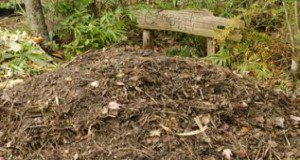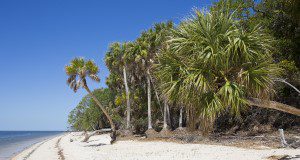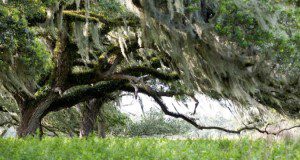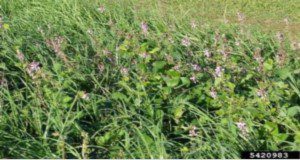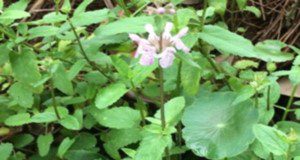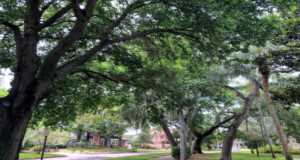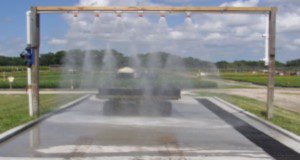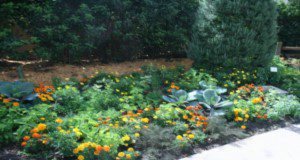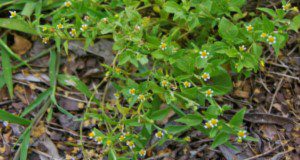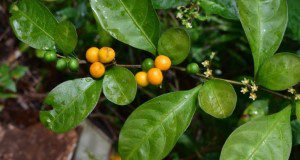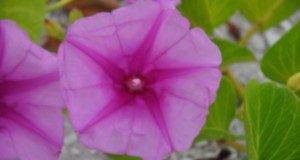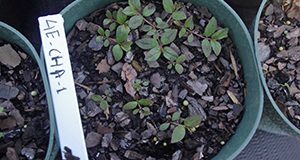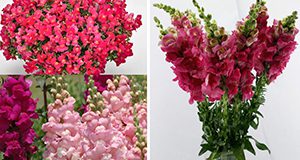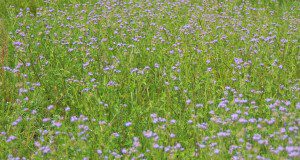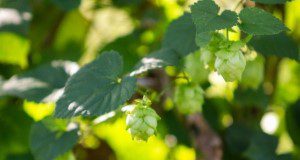This series of Key Plant, Key Pests publications are designed for Florida gardeners, horticulturalists, and landscape professionals to help identify common pests associated with regional flora. This new 6-page publication of the UF/IFAS Environmental Horticulture Department helps identify the most common pests found on trees in the sycamore group, Platanus spp., and it provides information and general management recommendations for sycamore lace bug, bacterial leaf scorch, powdery mildew, anthracnose, and canker stain. Written by Matthew Borden, Kelly Laplante, Juanita Popenoe, Adam Dale, Caroline R. Warwick, and Brian Pearson.
https://edis.ifas.ufl.edu/ep601
Tag: Environmental Horticulture Department
Key Plant, Key Pests: Lilyturf (Liriope muscari)
This series of Key Plant, Key Pests publications is designed for Florida gardeners, horticulturalists, and landscape professionals to help identify common pests associated with common Florida flora. This new 4-page publication of the UF/IFAS Environmental Horticulture Department provides information and general management recommendations for leaf and crown rot, anthracnose, southern blight, scales, and root rot nematodes on lilyturf. Written by Juanita Popenoe, Caroline R. Warwick, and David J. Norman.
https://edis.ifas.ufl.edu/ep600
Recycling Organic Materials to Improve Your Florida-Friendly Edible Landscape
This new 7-page publication of the UF/IFAS Environmental Horticulture Department is intended to educate homeowners on environmentally friendly ways to enhance soil fertility for vegetables, herbs, and fruits in the home landscape. It discusses strategies for recycling nutrients in place or via composting systems to create productive edible landscapes with less waste. Adopting these methods into your landscape maintenance routine will build organic matter and add nutrients to the soil naturally. Written by Terra Freeman, Tiare Silvasy, Lynn Barber, Tom Wichman, Esen Momol, Tina McIntyre, Jacqlyn Rivas, and Jen Marvin.
https://edis.ifas.ufl.edu/ep599
Lightning Damage to Landscape Palms
Florida is considered by some to be the lightning capital of the world. Florida has on average 3,500 cloud-to-ground lightning strikes per day and 1.2 million strikes per year. Given so many strikes, the probability of damage to certain palms is significant. Coconut palms, royal palms, and Washington palms are particularly vulnerable due to their great heights, but other tall palms may be equally susceptible. This new 6-page publication of the UF/IFAS Environmental Horticulture Department describes and includes many helpful photos of symptoms of lightning damage as well as lightning protection systems. Written by Stephen H. Brown, Douglas Caldwell, and Ralph Mitchell.
https://edis.ifas.ufl.edu/ep598
Key Plant, Key Pests: Oak (Quercus spp.)
This series of Key Plant, Key Pests publications is designed for Florida gardeners, horticulturalists, and landscape professionals to help identify common pests associated with common Florida flora. This new 9-page publication provides information and general management recommendations for borers, caterpillars, insect-induced galls, twig girdlers, oak leaf blister, root and butt rot, Tubakia leaf spot, mistletoe, psocids, lace bugs, woolly aphids, powdery mildew, Spanish and ball moss, and lichens. Written by Juanita Popenoe, Caroline R. Warwick, Adam G. Dale, and Alfred Huo, and published by the UF/IFAS Environmental Horticulture Department.
https://edis.ifas.ufl.edu/ep596
Biology and Management of Creeping Beggarweed (Desmodium incanum) in Warm-Season Turf
Creeping beggarweed is a common perennial broadleaf weed in Florida landscapes, home gardens, pastures, and other agricultural production systems. This new 6-page article is written for green industry professionals and others to help aid in the identification and management of creeping beggarweed in landscape turf and planting beds. Written by Grantly Ricketts and Chris Marble, and published by the UF/IFAS Environmental Horticulture Department.
https://edis.ifas.ufl.edu/ep591
Biology and Management of Florida Betony (Stachys floridana) in Ornamental Plants in Landscape Planting Beds
Florida betony (Stachys floridana) is a perennial weed in Florida landscape planting beds, gardens, turfgrass, and agricultural production systems. This new 4-page article is written for green industry professionals and others to aid in the identification and management of Florida betony in and around ornamental plants in landscape planting beds. Written by Thomas Smith and Chris Marble, and published by the UF/IFAS Environmental Horticulture Department.
https://edis.ifas.ufl.edu/ep597
Florida’s Urban Forest: A Valuation of Benefits
This new 13-page article combines canopy coverage data from all of Florida’s metropolitan and micropolitan areas with ecological models developed by the USDA Forest Service to calculate several key benefits of urban trees and an approximation of their monetary value. Benefits of urban trees include carbon sequestration/storage, air pollution filtration, and stormwater mitigation. Written by Drew C. McLean, Andrew K. Koeser, Deborah R. Hilbert, Shawn Landry, Amr Abd-Elrahman, Katie Britt, Mary Lusk, Michael G. Andreu, and Robert J. Northrop, and published by the UF/IFAS Environmental Horticulture Department.
https://edis.ifas.ufl.edu/ep595
How Much Space Does My Shade Tree Need? Planting Space Recommendations for Medium and Large Trees in Florida Cities
Trees provide urban landscapes with shade, beauty, and habitat. They can also help lessen the effects of flooding and urban heat buildup while storing carbon dioxide, a major greenhouse gas. When planted in the wrong place, however, trees can damage urban infrastructure. To maximize the benefits provided by urban trees, we need better-informed tree selection and larger planting spaces with the capacity to support big-canopy trees. This new 8-page fact sheet is intended to help arborists, urban foresters, landscape designers, landscapers, and anyone else responsible for the planting of trees in developed areas make informed decisions regarding the planting width requirements of the trees they select. Written by Deborah R. Hilbert, Andrew K. Koeser, Brooke L. Moffis, JuWanda G. Rowell, and Drew C. McLean, and published by the UF/IFAS Environmental Horticulture Department.
https://edis.ifas.ufl.edu/ep592
Watering Station Best Management Practices for Container Nurseries
Watering stations are specialized irrigation structures where plants are watered immediately after transplanting. Water not retained by the container substrate as well as water falling between containers becomes runoff. This runoff can contain sediment and nutrients, such as nitrogen and phosphorus, that can impact natural waters if not managed according to Best Management Practices (BMPs). The purpose of this new 3-page fact sheet is to provide examples of how runoff from watering stations at two nurseries was managed after implementation of the BMP. Written by Tom Yeager and published by the UF/IFAS Environmental Horticulture Department.
https://edis.ifas.ufl.edu/ep590
Edible Landscaping Using the Nine Florida-Friendly LandscapingTM Principles
Maintaining edible landscapes in a way that protects the environment is an important concern for protecting Florida’s water quality. The objective of this new 7-page publication is to introduce the framework of the Florida-Friendly Landscaping™ principles and apply the principles to guide decisions about Best Management Practices (BMPs) for care of edible landscapes. Written by Tiare Silvasy, Lynn Barber, Esen Momol, Tina McIntyre, Tom Wichman, Gail Hansen, Jen Marvin, Terra Freeman, Joseph Sewards, Wendy Wilber, and Jacqlyn Rivas.
https://edis.ifas.ufl.edu/ep594
Biology and Management of Galinsoga (Galinsoga quadriradiata) in Ornamental Crop Production
Galinsoga (Galinsoga quadriradiata) is an erect (upright), herbaceous, short-lived warm-season annual weed in Florida landscapes, container nurseries, and other agricultural production systems. In nurseries and landscapes, galinsoga can be a troublesome weed, but it has been utilized by some cultures for food or medicinal purposes. This new 5-page article is written for green-industry professionals and others to aid in the identification and management of galinsoga in and around ornamental plants. Written by Thomas Smith, Chris Marble, Shawn Steed, and Nathan Boyd, and published by the UF/IFAS Environmental Horticulture Department.
https://edis.ifas.ufl.edu/ep593
Urban Tree Selection for Diversity
Urban tree diversity is important when attempting to create a healthy, beneficial, and resilient urban forest. Having a variety of trees can increase the aesthetic value for residents and create habitats for plants and animals. Some common street trees currently in the landscape are not site-appropriate and create infrastructure damage. By planting different types of trees in these locations, maintenance costs and infrastructure damage can be reduced and tree longevity increased. This new 4-page fact sheet is intended to provide urban foresters, arborists, landscape designers, and others in charge of tree planting with a process for introducing new species into the urban environment. Written by Deborah R. Hilbert, Andrew K. Koeser, and Robert J. Northrop, and published by the UF/IFAS Environmental Horticulture Department.
https://edis.ifas.ufl.edu/ep589
Distribution, Identification and Management of Two-Leaf Nightshade (Solanum diphyllum), an Invasive Plant in Florida
Two-leaf nightshade, Solanum diphyllum, is a member of the Solanaceae or potato family. It is native to Mexico southwards to Costa Rica. It has escaped cultivation in Florida and grows as far north as Duval County and from Volusia County south to Miami-Dade County. A “bird-dispersed” volunteer, it occurs in urban and conservation areas and on disturbed land. The plants produce abundant berries with many many small seeds. This new 5-page publication of the UF/IFAS Environmental Horticulture Department is primarily intended for Florida gardeners, landscapers, and land managers, and it contains information on identification, flowering, fruiting, and management recommendations for this widely occurring plant. Written by Stephen H. Brown, Chris Marble, and Stephen F. Enloe.
https://edis.ifas.ufl.edu/ep588
Railroad Vine (Ipomoea pes-caprae): Identification and Uses
Railroad vine is one of the most widely distributed beach plants in the world. The moving sand and salt spray make the beach environment a harsh one, and the plants that live there are specialized to colonize this environment. This new 7-page document, published by the UF/IFAS Environmental Horticulture Department, describes railroad vine’s leaves, flowers, fruit, planting and maintenance, and insect and disease problems. Written by Stephen H. Brown and Marc S. Frank.
https://edis.ifas.ufl.edu/ep587
Biology and Management of Garden Spurge (Euphorbia hirta) in Ornamental Crop Production
Garden spurge is a prostrate, herbaceous, short-lived, warm-season annual weed commonly found in Florida landscapes, container nurseries, and other agricultural production areas. This 5-page article is written to aid green industry professionals and others in the identification and management of garden spurge in and around ornamental plants. Written by Thomas Smith, Chris Marble, Shawn Steed, and Nathan Boyd, and published by the UF/IFAS Environmental Horticulture Department, July 2020.
https://edis.ifas.ufl.edu/ep586
Development of a Model Mutagenesis System for Snapdragon
This 4-page document describes the advantages of snapdragon’s elegant transposon mutagenesis system and its connection to plant breeding. Written by Zhaoyuan Lian, Heqiang Huo, Sandra Wilson, and Jianjun Chen, and published by the UF/IFAS Environmental Horticulture Department, August 2020.
https://edis.ifas.ufl.edu/ep584
Biology and Management of Praxelis (Praxelis clematidea) in Ornamental Crop Production
Praxelis is a newly emerging weed species in Florida, one that Plant Protection and Quarantine (PPQ) is considering adding to the federal noxious weed list. The plant can be easily misidentified and confused with Ageratum houstonianum (bluemink) and Conoclinium coelestinum (blue mistflower) as well as several other species that have similar flower characteristics. This new 5-page article is written for green industry professionals and others to aid in the identification and management of praxelis in and around ornamental plants. Written by Yuvraj Khamare, Chris Marble, Shawn Steed, and Nathan Boyd, and published by the UF/IFAS Environmental Horticulture Department.
https://edis.ifas.ufl.edu/ep585
LED light increases leaf area and root length of Humulus lupulus (var. Tettnanger) in vitro
Propagation of hops has traditionally been accomplished through vegetative techniques. A more modern technique, micropropagation, can be used to propagate hops and offers several advantages to vegetative techniques. Research examining the use of LED lights in plant production has observed its ability to promote growth in plants through emission of higher light quality, such as enhanced red and blue wavelength discharge. This new 5-page EDIS publication provides information on the use and application of LED lights to enhance leaf area and root length of hops. Written by Chi D. Nguyen, Dominic Vu, Heqiang Huo, and Brian Pearson, and published by the UF/IFAS Environmental Horticulture Department.
https://edis.ifas.ufl.edu/ep583
Small-to-Medium-Scale Sensory Evaluation of Horticultural Crops: Measuring Responses
When measuring the responses of panelists, the main principle behind sensory evaluation, a variety of sensory tests can be used. This new 4-page publication is the second in a series designed to assist producers in the small-to-medium-sized sensory evaluation of their horticultural crops, outlining the types of data and sensory measurement techniques utilized in sensory evaluation. Written by Sean Michael Campbell and Charles A. Sims, and published by the UF/IFAS Environmental Horticulture Department.
https://edis.ifas.ufl.edu/ep582

